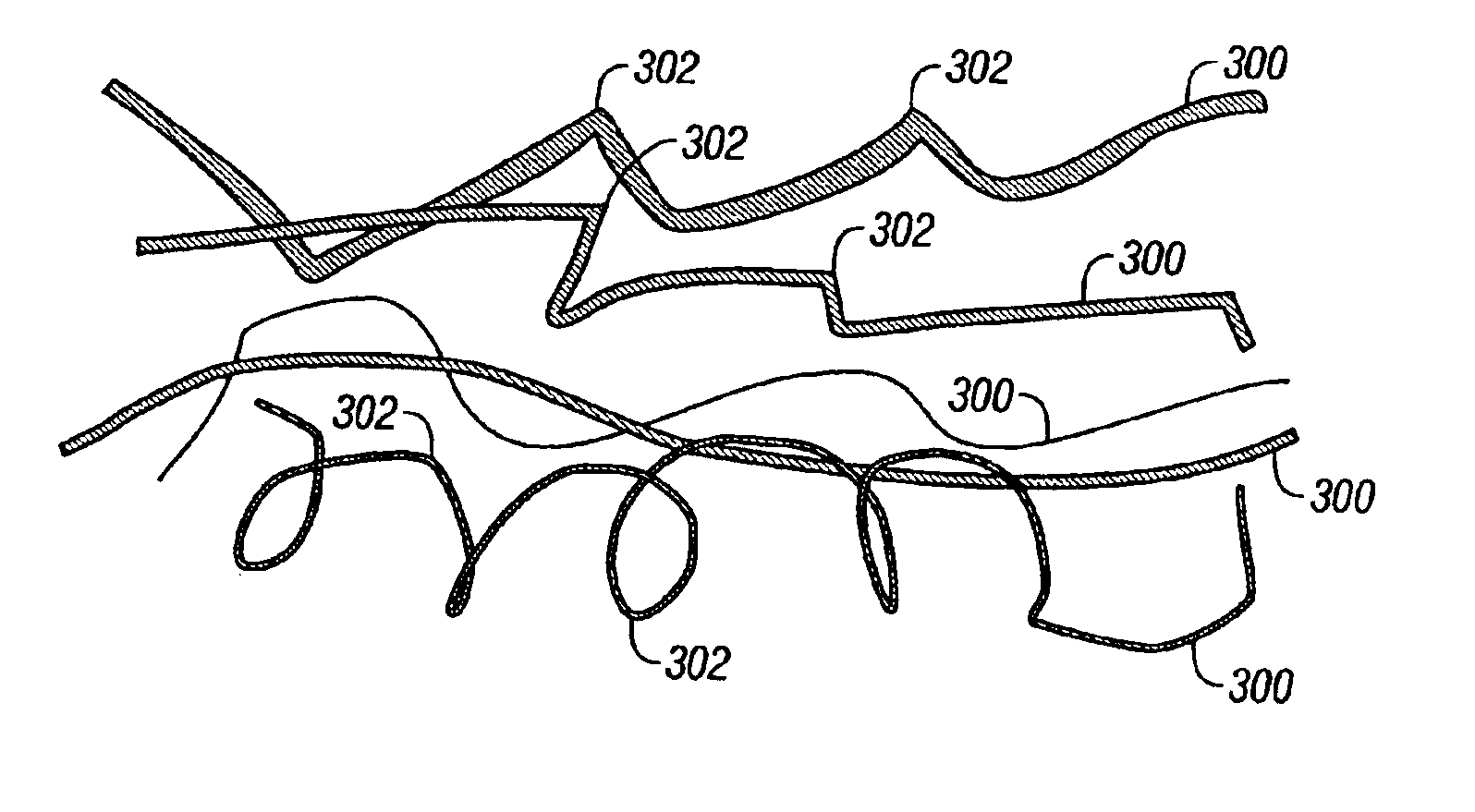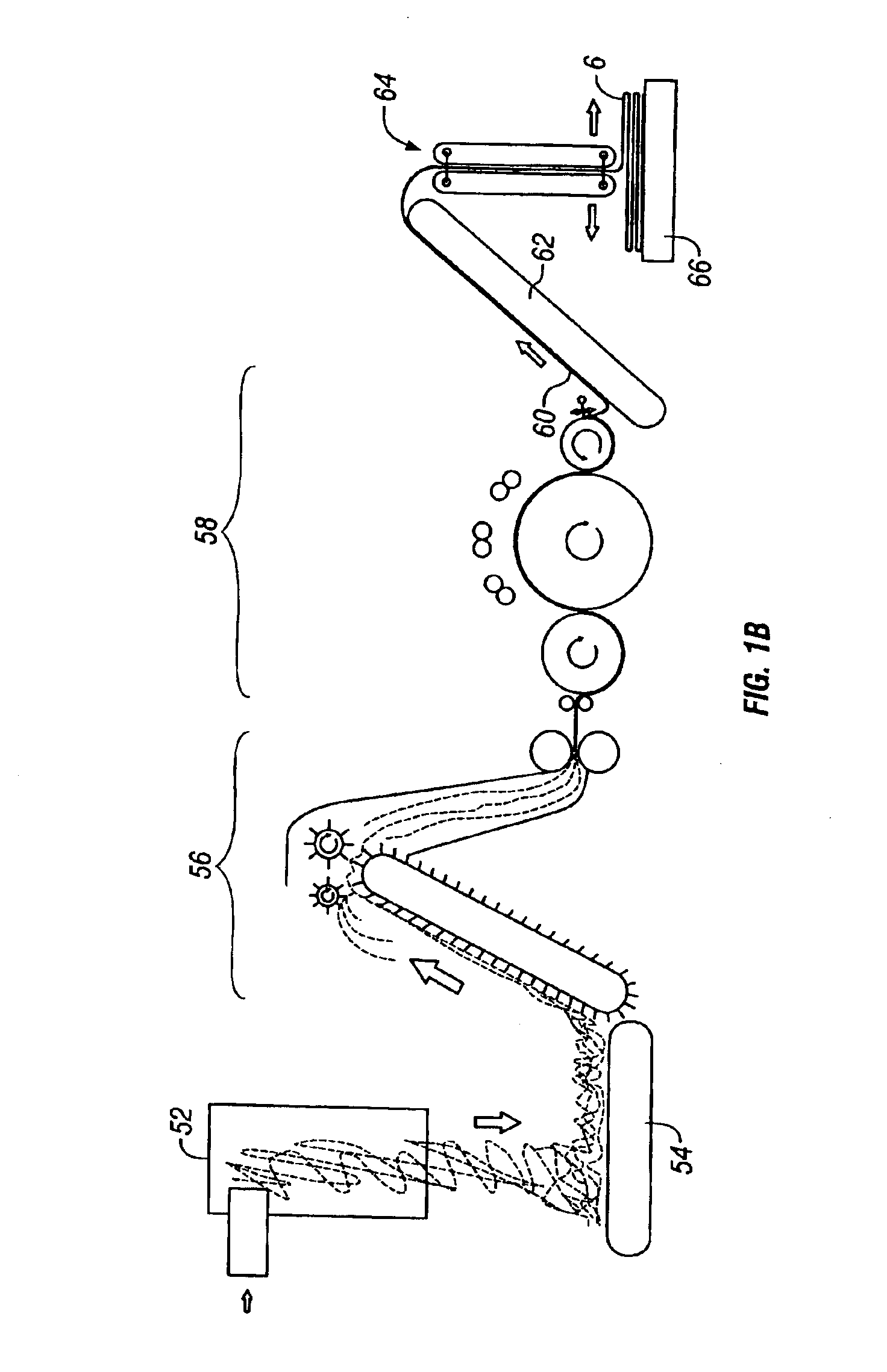Composite nonwoven fabric and method for making same
a non-woven fabric and composite technology, applied in the field of non-woven fabrics, can solve the problems of tensile wear more quickly than their synthetic grit based counterparts, and achieve the effect of improving performance, surprising isotropic strength and structural integrity
- Summary
- Abstract
- Description
- Claims
- Application Information
AI Technical Summary
Benefits of technology
Problems solved by technology
Method used
Image
Examples
Embodiment Construction
[0022]In one of its aspects, the present invention relates to a composite nonwoven fabric comprising a composite web material which includes metal fibers and nonmetal fibers intermixed and interengaged with one another. As used herein, the term composite nonwoven fabric means a nonwoven fabric that comprises at least one type of metal fibers and at least one type of nonmetal fibers. The composite web material preferably may be made using a carding machine, a garnett, or may be run on an airlay system. The composite nonwoven fabric of the invention preferably then is lapped to form a multi-layered product with the fibers of adjacent layers being oriented in different directions. The fibers of the lapped layers are then interengaged with one another (in the z-direction) in a needle-punching step.
[0023]In another of its aspects, the present invention entails a method for making a composite nonwoven fabric, comprising the steps of: blending a predetermined amount of metal fibers and a p...
PUM
| Property | Measurement | Unit |
|---|---|---|
| diameter | aaaaa | aaaaa |
| diameter | aaaaa | aaaaa |
| average length | aaaaa | aaaaa |
Abstract
Description
Claims
Application Information
 Login to View More
Login to View More - R&D
- Intellectual Property
- Life Sciences
- Materials
- Tech Scout
- Unparalleled Data Quality
- Higher Quality Content
- 60% Fewer Hallucinations
Browse by: Latest US Patents, China's latest patents, Technical Efficacy Thesaurus, Application Domain, Technology Topic, Popular Technical Reports.
© 2025 PatSnap. All rights reserved.Legal|Privacy policy|Modern Slavery Act Transparency Statement|Sitemap|About US| Contact US: help@patsnap.com



